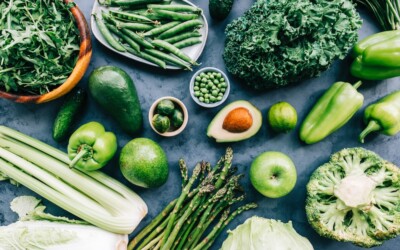Table of Contents
Welcome to Jinju
My husband and I visited Jinju at the end of April, a city nestled in South Korea’s southern region that beautifully marries its historical significance with vibrant modernity. From the moment we stepped off the train at the traditional Korean-style station, colourful and distinct, Jinju invited us on a unique journey back in time, all while keeping one foot firmly in the present.

First Impressions and Morning Coffee
Our adventure in Jinju began with a quest for the perfect cup of coffee to kickstart our day of exploration. Although the train station didn’t have the coffee shop we were hoping for, we found a cosy spot near the historic Jinju Fortress, just a short taxi ride from the city centre. The drive itself was an eye-opener—though only about 15 minutes, it felt like a gateway to a different era.
Strolling Through History at Jinju Fortress
Jinju is renowned for its fortress, a grand structure by the Namgang River, steeped in the dramatic history of the 1592 Japanese invasion. Known locally as the castle, this fortress is more than just an old military site; it’s a living museum, home to gates, shrines, and lush, wooded areas where history whispers through the leaves.

Despite its historical echoes, the fortress isn’t frozen in time. It’s a vibrant part of Jinju’s daily life, offering breathtaking views, small treks, and a tranquil spot to relax and soak in the city’s serene beauty. The entry fee is minimal (around US$1-$2), making it accessible for everyone to enjoy this majestic site.
A Glimpse into Tradition at Jinju Fortress
The Watchtower at Jinju Fortress Entrance
At the entrance of Jinju Fortress, a traditional Korean watchtower stands prominently. Known as a “Jeongja,” this tower served as a guardhouse and was crucial for the fortress’s defence. It features ornate wooden beams and a gracefully curved roof, typical of historical Korean architecture.


The tower’s design is not only functional but also visually striking, demonstrating the skilled craftsmanship of its builders. It was strategically placed to oversee the area and protect the city, serving as a first line of defence and a significant historical marker for visitors entering the fortress.
Walking past this watchtower, we were reminded of the fortress’s historical importance and the role it played in protecting Jinju. It’s an impressive introduction to the fortress, blending history with architectural beauty in a way that captures the essence of the place right from the start.
A Welcoming Pavilion by the Watchtower
Right next to the watchtower at Jinju Fortress’s entrance, you’ll find a welcoming pavilion. This traditional Korean structure is designed with open sides and a raised platform, making it the perfect spot for visitors to relax and enjoy the surroundings.

The pavilion complements the nearby watchtower with its similar architectural style, featuring wooden beams and a classic roof that showcases traditional Korean craftsmanship. It’s a popular spot for visitors to gather, snap photos, and take a break either before they start their tour or just as they finish.
From this pavilion, you get a great view of the fortress gate and can really appreciate the beauty and detail of the watchtower right beside it. It’s a simple yet beautiful space that highlights the thoughtful design and functionality of historical Korean architecture.
A Vibrant Display of Traditional Korean Dance at Jinju Fortress
During our exploration of Jinju Fortress, we stumbled upon a captivating display that felt like stepping back in time. Scattered across the lush, green grounds were striking figures of traditional Korean dancers, dressed in colourful hanbok, the classic Korean attire. These models, positioned as if frozen mid-performance offered a vibrant tableau of Korea’s rich cultural heritage.

Each figure was meticulously crafted, showcasing the elegant fabrics and intricate designs typical of hanbok, which are often worn during festivals and significant cultural events. This display was not just a visual treat; it served as a dynamic educational exhibit, illustrating the traditional dances that have been a part of Korean celebrations for centuries.
Exploring the Gates of Jinju Fortress
As we continued exploring Jinju Fortress, we came across another ornate gate, one of several dotted along the fortress walls. The detailed woodwork and colourful paintings on each gate are really striking. These gates are not just where you enter; they’re a gateway to the fortress’s rich history and the stories from its past.
Each gate panel is decorated with scenes from Korean mythology, adding an element of storytelling to the structure. It’s interesting to see how these images make the gate more beautiful while also symbolizing the fortress’s protective spirit.
Beside the gate, there are guardian statues that you often find at historical sites in Korea. They are meant to ward off evil and really make you feel like you’re stepping back in time.

Just like the other gates, this one also shows the impressive skills of ancient Korean craftsmen with its vibrant, detailed woodwork.

A Cultural Feast at the Fortress
Inside the fortress, we found a small but fascinating national museum that houses artefacts from the Imjin War. The museum offers a 3D animated video of the invasions, complete with English-language narration upon request. It’s an educational experience, providing insights into the historic battles, traditional silk garments, and even the pottery of the era.
Dining and Drinking Recommendations
While the fortress grounds have limited food and drink options, I recommend packing a picnic or venturing to the coffee shop near the museum, which offers refreshments at reasonable prices. For those exiting through the north gate, skip the overpriced tourist traps and enjoy the more affordable local cafés instead.
Getting to Know Hamo, Jinju’s Mascot
Everywhere in Jinju, you’re likely to bump into Hamo, the city’s friendly mascot. This character isn’t just cute and photogenic; it’s a big part of what makes Jinju special. Sporting a bright smile and an easy-going vibe, Hamo pops up all over town—from shop windows to park benches. It feels like he’s always around to give you a warm welcome.

Hamo is more than just a fun figure for tourists; he symbolizes Jinju’s rich history and its lively culture. You’ll see his image during big events like the Jinju Lantern Festival, where he adds a bit of fun to the traditions. If you take a piece of Hamo merchandise home, like a plush toy or a keychain, you’re carrying a little bit of Jinju with you.
Wandering around Jinju, and seeing Hamo everywhere really brought the streets to life and made our experience feel more personal. Whether you’re here to soak up some history or just enjoy the local scene, Hamo’s cheerful presence makes exploring Jinju a little more special.
Relaxing by the Namgang River
After soaking in all the history Jinju has to offer, unwinding by the Namgang River is the perfect way to end the day. The river, with its calm waters and scenic views, offers a tranquil spot to kick back and enjoy the sunset.
It’s also a great place to reflect on everything you’ve seen and done throughout the day. The gentle sounds of the water and the quiet beauty of the surroundings make it an ideal spot for anyone looking to escape the city noise for a bit. Whether you’re stretching out on a picnic blanket or just taking a leisurely stroll along the banks, the Namgang River is Jinju’s natural haven for peace and relaxation.
Jinju, a Must-Visit City
Jinju is more than just a stop on a tourist itinerary; it’s a city that captures the essence of Korea’s past and present. Whether you’re a history buff, a cultural enthusiast, or just looking for a peaceful escape, Jinju offers a bit of everything. From the imposing Jinju Fortress and its historical treasures to the tranquil riverbanks and the friendly face of Hamo, Jinju welcomes all who visit with open arms and a story to tell. Don’t miss the chance to experience this captivating city for yourself.

Must read A Two-Day Adventure in Mongolia
















0 Comments